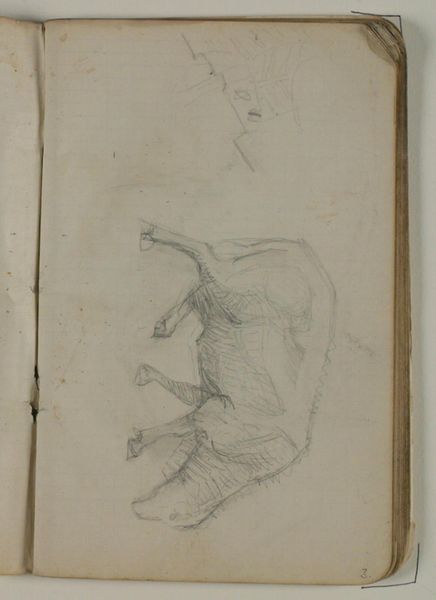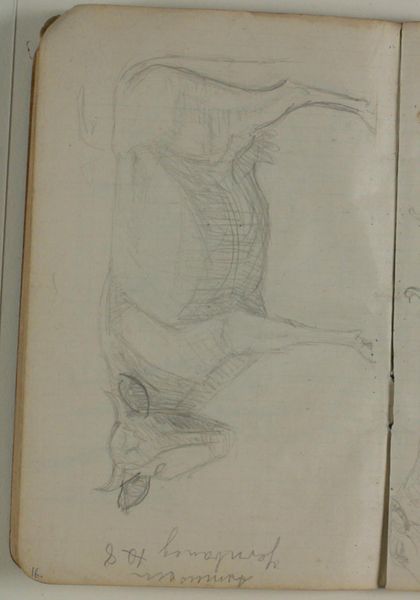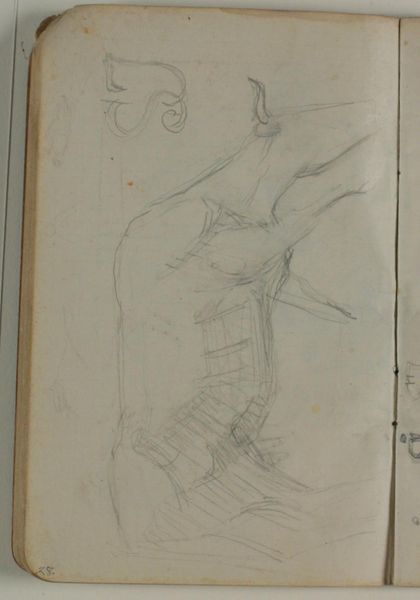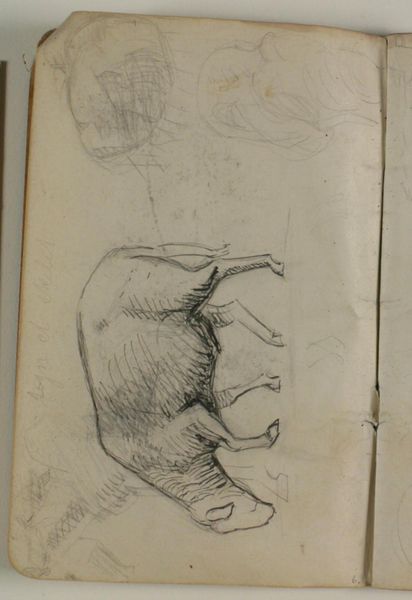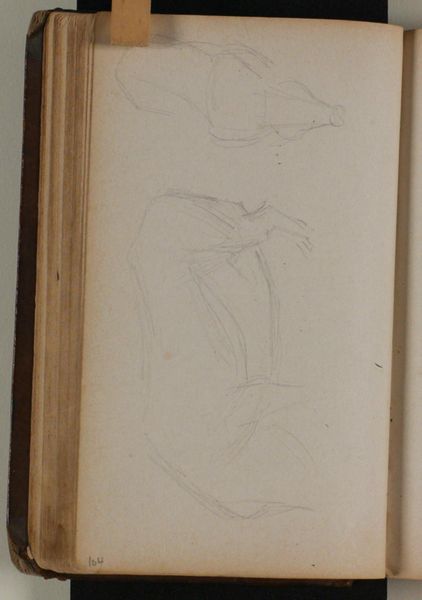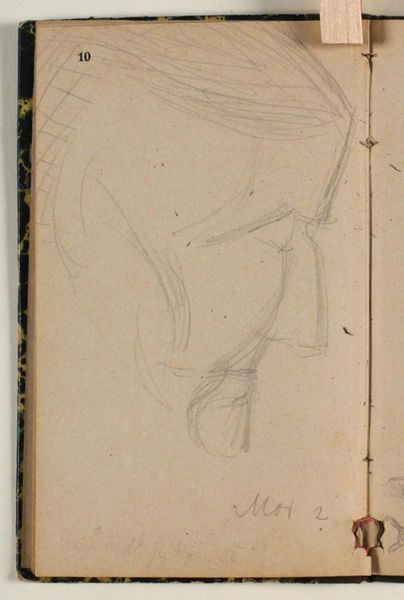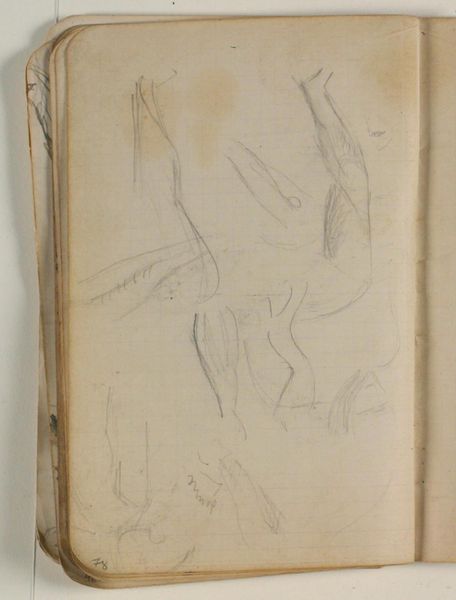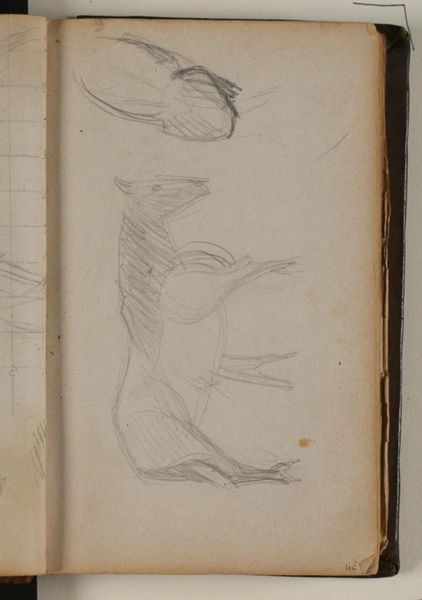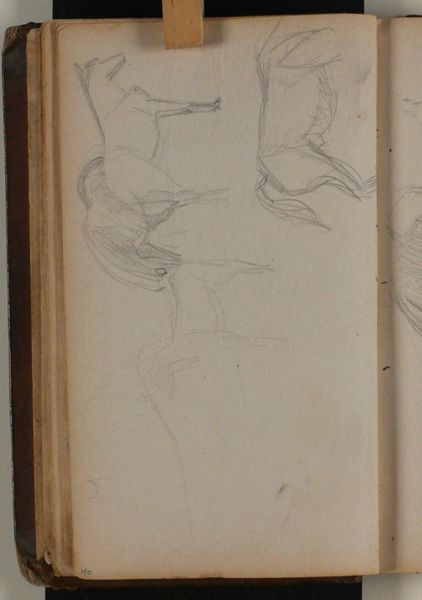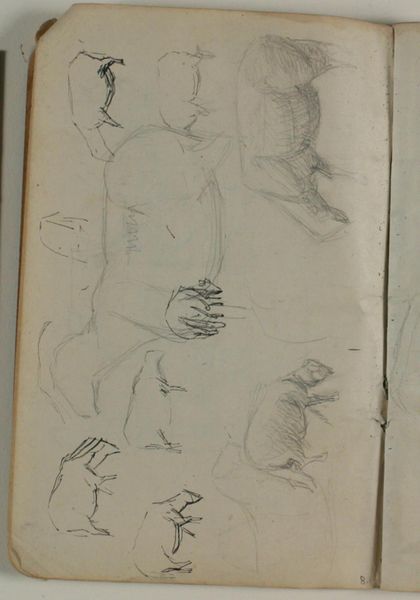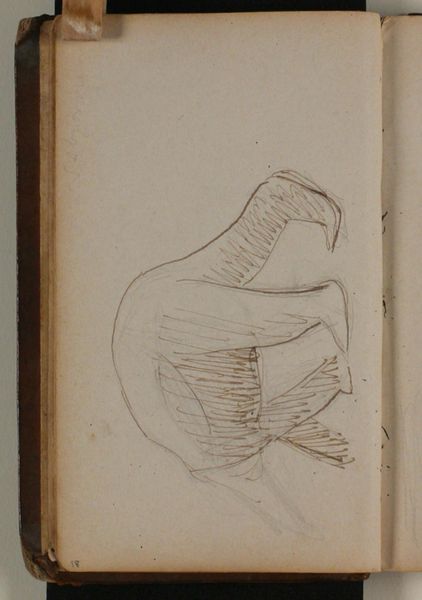
drawing, pencil
#
drawing
#
figuration
#
pencil
Dimensions: 175 mm (height) x 118 mm (width) x 6 mm (depth) (monteringsmaal), 175 mm (height) x 110 mm (width) (bladmaal)
Editor: Here we have "Skitse af dyrekrop (løve)", or "Sketch of Animal Body (Lion)" by Niels Larsen Stevns, dating from around 1900 to 1905. It's a pencil drawing. What immediately strikes me is its incompleteness – almost skeletal in its rendering. What do you make of it? Curator: It’s a fascinating glimpse into Stevns’ process. Observe the artist's choice of medium: the unforgiving pencil line. Notice how it both defines the form and creates a sense of tension, of a potential energy about to be unleashed. It does not attempt to depict the real anatomy, and therefore challenges a conventional perception of realism and figurative representations, wouldn’t you agree? Editor: Yes, I see that now. The emphasis isn't on accurate representation but on the gestural quality of the lines, almost like he’s capturing the essence of the lion. The strokes create movement even though the lion is static. Curator: Precisely. The composition directs the eye, with the contrast in pencil stroke density drawing us toward the possible figure’s haunch, before abruptly releasing at the rear legs and tail. What relationship could we suggest connects that figure to the geometric planes visible at the composition's border? Editor: It’s a contrast between the organic form of the lion and… I guess, a planned man-made geometrical imposition? A reminder that the lion is being observed or perhaps contained? Curator: An interesting hypothesis. We may suggest that it forms part of an armature within Stevns's conceptual construction. Does his economy in line and form allow him to go further into some deconstruction? How much meaning may rest in what is omitted rather than what we see? Editor: It does make you wonder. It highlights how much a seemingly simple sketch can reveal about an artist’s approach to form and representation. Curator: Indeed. It’s a study not just of a lion, but of line, form, and the very act of seeing.
Comments
No comments
Be the first to comment and join the conversation on the ultimate creative platform.

